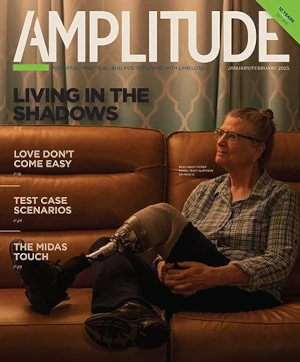Using data points at four, eight, and 12 months after discharge from rehabilitation, a team of researchers from Australia conducted a retrospective and prospective cohort study that allowed them to outline predictors that cause people with lower-limb amputations to stop using prostheses. Retrospective participants were interviewed at a median of 1.9 years after rehabilitation discharge and prospective participants at a median of 1.3 years after discharge. The researchers then used the predictors to create rules that determine the likelihood that a person will discontinue prosthetic use.
At four months after discharge from rehabilitation, five variables were identified as predictive of non-use of the prosthesis: amputation level above the transtibial level, use of a mobility aid, dependence walking outdoors on concrete, a high number of comorbidities, and not having a diagnosis of type 2 diabetes. The researchers found that if four out of five predictor variables were present at this data point, the probability of non-use increased from 12 percent to 86 percent.
At eight months after discharge from rehabilitation, three variables were identified as predictive of non-use of the prosthesis: amputation level above the transtibial level, use of a mobility aid, and dependence walking outdoors on concrete. The researchers found that if all three predictor variables were present at this data point, the probability of non-use increased from 15 percent to 86 percent.
At 12 months after discharge from rehabilitation, three variables were identified as predictive of non-use of the prosthesis: amputation level above the transtibial level, use of a mobility aid, and a delay in fitting the prosthesis. The causes of delay in fitting the prosthesis included wound complications, comorbidities, orthopedic injuries, and deconditioning. The researchers found that if two of the three predictor variables were present at this data point, the probability of non-use increased from 17 percent to 36 percent.
Caroline Roffman, senior physiotherapist for amputee rehabilitation at Fiona Stanley Hospital, Murdoch, Australia, conducted the research with scientists from Royal Perth Hospital, Australia, and Curtin University, Bentley, Australia. “Diabetic patients were more likely to use their prosthesis,” Roffman told Science Network Western Australia. “One theory is the prosthetic leg may be functionally better than the leg they had before surgery, however further research is required. Our research highlights the importance of rehabilitation at an appropriate intensity early after amputation.”
The study is published in the December issue of the Journal of Physiotherapy.




